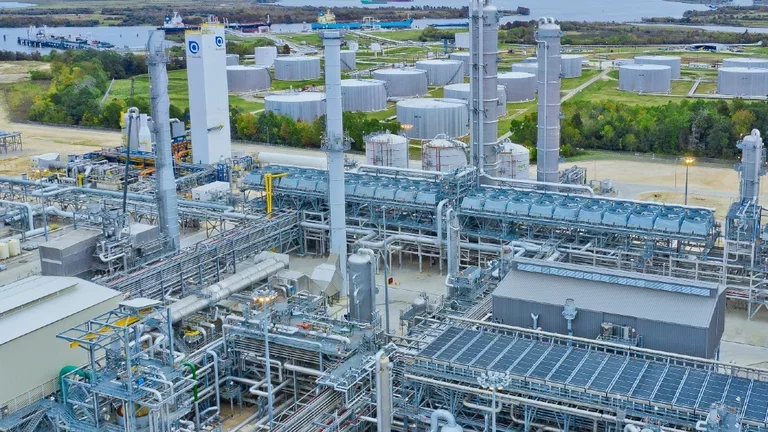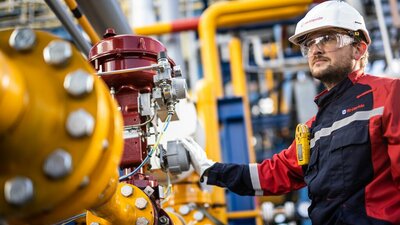Autothermal reforming (ATR): reforming the future with low-carbon hydrogen
Published on November 05, 2024
3 minutes

In the race to decarbonize, Autothermal Reforming (ATR) is emerging as a promising technology to produce low-carbon hydrogen on a large scale. By focusing on this process, Air Liquide is strengthening its commitment to accelerating the energy transition. With projects such as the ones launched in Japan and the USA in 2023, the Group is deploying ATR to meet the needs of its industrial customers while reducing its customers' CO₂ emissions.
What is ATR technology?
ATR is a hydrogen production technology based on an advanced chemical process. Unlike traditional processes, which require large amounts of external heat, ATR combines two chemical reactions: partial oxidation and steam reforming. These two reactions occur simultaneously within a reactor, generating the heat needed for the process through an autothermal reaction. This means that the system itself produces the heat it needs, thus greatly reducing dependence on external energy sources. Learn more in this video:
How does ATR work?
In concrete terms, natural gas (methane) is converted at high temperature with oxygen and steam into synthesis gas molecules, a mixture of hydrogen (H2), carbon monoxide (CO) and carbon dioxide (CO2). The chemical reaction with oxygen generates the heat required to "break" the methane molecules. Downstream the CO shift reaction then converts the CO in additional hydrogen and carbon dioxide thanks to water vapor. Finally, the hydrogen is purified to be ready for use, while the CO2 is captured for sequestration or reuse in other industries.
Its role in the energy transition
The main advantage of this technology lies in simplified carbon capture. When combined with a CO₂ capture solution, ATR offers greater energy efficiency, reduced investment and, above all, a simplified production process, enabling up to 99% of carbon emissions to be captured in integrated and therefore more compact industrial plants. By combining these processes, ATR produces low-carbon hydrogen, which helps to decarbonize particularly energy-intensive industries such as chemicals and refining or mobility. These industries can use this low-carbon hydrogen as a replacement for natural gas in their processes to reduce their CO₂ emissions without losing efficiency.
Promising projects in collaboration with INPEX Corporation
In 2023, Air Liquide launched a pilot project in Japan, in collaboration with INPEX Corporation, a Japanese energy group, to produce low-carbon hydrogen and ammonia using ATR technology. Japan is strongly committed to the energy transition, as demonstrated by its plan to invest 103 billion euros in hydrogen over the next fifteen years1. ATR is therefore a key solution for reducing its CO₂ emissions while securing its energy supplies. This project is a first in the country and marks a turning point for the mass production of decarbonated hydrogen by proving the viability of the ATR technology
The same year, INPEX Corporation, Air Liquide, LSB Industries, Inc. and Vopak Moda agreed to collaborate on the development of a large-scale, low-carbon ammonia production and export project on the Houston Ship Channel, in the USA, using the ATR technology. If the development proceeds, the project’s first phase aims to produce more than 1.1 million tonnes per year of low-carbon ammonia by the end of 2027.
By mastering autothermal reforming, Air Liquide confirms its role as a technological leader in the decarbonization of industry. Continuing to invest in the low-carbon hydrogen value chain, the Group continues to develop this process on a global scale. Through large projects and strategic collaborations, Air Liquide is actively contributing to the ramp-up of low-carbon hydrogen, essential for the energy transition.
ATR and SMR: what are the differences?
Both technologies convert hydrocarbons into hydrogen, however:
- ATR converts methane with steam and oxygen into syngas. Adding oxygen to the reactor provides the energy needed to complete the conversion - without additional heat. The SMR converts methane to syngas with steam only, but requires additional heat input.
- ATR is particularly suitable for large capacities, while smaller ones tend to favor SMR.


